#Afghanistan News in Urdu
Explore tagged Tumblr posts
Text
Shaheed Gul Bahar Bugti And his son Shaheed Murad Ali Bugti
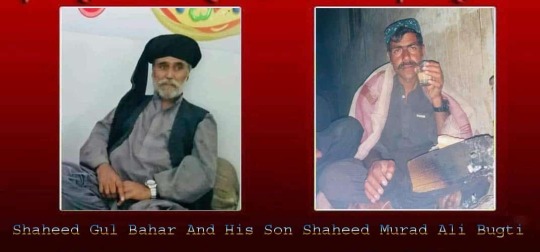
Today is the 3rd martyrdom anniversary of Martyr Gul Bahar Bugti and Martyr Murad Ali Bugti, they were killed by Pakistani secret agencies in Kandahar Afghanistan on 20th December 20...
#balochistan#bugti#afghanistan#baloch#freedom#wazir khan bugti#shaheed gul bahar bugti#english news#news urdu#Martyr Murad Ali Bugti#Dera Bugti#refugeesbaloch#baloch refugees#Bugti Refugees#free balochistan#baloch republican party#Struggle Balochistan#Struggle#Freedom Balochistan Struggle#BRP#Leader BRP
1 note
·
View note
Text
Two bomb explosions near candidates' offices in the Pakistani province of Balochistan killed at least 28 people and wounded dozens on the eve of general elections, officials said.
The first blast killed 16 people in Pishin district, north of Quetta city.
A second explosion left 12 people dead in Qila Saifullah to the east. There was no immediate claim for the attacks.
The vote has been marred by violence and claims of poll-rigging. Former PM Imran Khan is barred from contesting.
Police are still trying to determine the cause of the two blasts.
Resource-rich Balochistan - Pakistan's largest, and poorest, province - has a history of violence. It has seen a decades-long struggle for greater autonomy by various groups, some of them armed. Islamist militants, including the Pakistani Taliban (TTP), operate along the border with Afghanistan.
The bomb in Pishin, a town about 100km (62 miles) south-east of the Afghan border, went off in front of an independent candidate's party office. The provincial authorities said 25 people were also wounded.
Images on social media showed cars and motorbikes blown apart by the force of the explosion. Officials told the BBC the candidate was meeting his polling agent at the time.
The second blast targeted the election office of the JUI-F party. A senior police official told AFP news agency it took place in the main bazaar of Qila Saifullah, about 190km (120 miles) east of Quetta.
Twenty people were wounded in the incident and the number of casualties in the two attacks could rise, officials said.
There have been violent incidents in both Balochistan and Khyber Pakhtunkhwa provinces in the week before Thursday's vote, and the violence in Pishin and Qila Saifullah was not unexpected.
In mid-January, Baloch Liberation Army-Azad (BLA) insurgents released a pamphlet after claiming responsibility for bombing an election training office. The pamphlet urged people to boycott the elections. Soon after, reports of hand grenade attacks on political party offices were reported from various cities in the province.
Many voters in Balochistan feel neglected by the country's political parties, given the province has so few seats in parliament. They often feel candidates are foisted on them, with few if any links to Balochistan.
And many feel the vote is unfair. "It is a selection," numerous people told BBC Urdu in the city of Turbat last month.
Following Wednesday's attacks, the Balochistan government said Thursday's vote would proceed as planned.
"Rest assured, we will not allow terrorists to undermine or sabotage this crucial democratic process," provincial information minister Jan Achakzai posted on X, formerly Twitter.
More than 128 million voters are eligible to cast ballots in the election. In Pakistan's first-past-the-post system, 266 of 336 National Assembly seats are directly elected.
But many people are questioning the credibility of the vote as Khan and his party, the PTI, have been sidelined.
The PTI won the largest number of seats in the last general election but Khan was jailed on corruption charges last year and disqualified from running for public office. Last week he was convicted in three other cases and faces years in prison - he says all the charges are politically motivated.
The authorities deny carrying out a crackdown, but many PTI leaders are behind bars, in hiding or have defected. Thousands of the party's supporters were rounded up after protests - at times violent - when Khan was taken into custody last year.
PTI candidates are having to run as independents following the electoral commission's decision to strip the party of its cricket bat symbol. Electoral symbols are vital in helping voters mark their ballots in a country with high rates of illiteracy.
The man tipped to win Thursday's election is three-time former PM Nawaz Sharif, who himself was behind bars at the last election. Analysts say it appears he has done a deal with the military to facilitate his return to politics.
A high turnout will be key to the PTI's chances, many analysts say. How to tackle, and who to blame for, the country's economic crisis will be high in voters' minds. Results must be announced within 14 days of the election.
3 notes
·
View notes
Text
Discovering Languages that Use the Arabic Alphabet
When people think of the Arabic alphabet, they often associate it with the Arabic language alone. However, a surprising number of languages around the world also rely on this script for their written communication. This alphabet has traveled across continents and cultures, influencing and blending with diverse languages in fascinating ways. From Central Asia to East Africa, languages that use the Arabic alphabet illustrate its adaptability and cultural reach.
The Arabic Alphabet Beyond Arabic
The Arabic script is one of the most widely adopted writing systems globally, second only to the Latin alphabet. Its journey began over a thousand years ago and has since touched the linguistic landscape of numerous regions, especially those with Islamic influence. This script often adjusted its form to suit new sounds and structures in different languages, making it a versatile foundation for many non-Arabic-speaking communities.
Persian: A Classical Example
Persian, also known as Farsi, is perhaps one of the best-known languages that use the Arabic alphabet. Although Persian and Arabic are from different language families, the adoption of the Arabic script in Persian dates back to the early days of Islam's spread into Persia. Persian adapted the alphabet by adding a few letters to represent sounds that don't exist in Arabic, a modification that has allowed it to flourish and develop a unique literature and poetic tradition.
Urdu: A Language of Poetry and Expression
Urdu, primarily spoken in Pakistan and parts of India, also uses the Arabic script. The beauty of Urdu lies in its calligraphy, which draws heavily from the aesthetic traditions of Persian and Arabic scripts. Urdu writing, known as Nastaliq, has a distinctive style that is both expressive and complex. In Urdu poetry, prose, and even everyday communication, this script has become an inseparable part of its cultural identity.
Pashto and Dari in Afghanistan
Afghanistan’s linguistic diversity includes Pashto and Dari, two languages that have incorporated the Arabic script into their writing. Each language has evolved with regional adaptations, but both have deep connections to Islamic literature and philosophy. The Arabic alphabet in Afghanistan, like in many other countries, provides a bridge between local linguistic traditions and the broader Islamic world.
Malay and Jawi: A South Asian Influence
In Southeast Asia, the Arabic script made its way into languages like Malay. Known locally as Jawi, the adaptation of Arabic letters to Malay was a result of Islamic influence on the region, starting in the 14th century. While Jawi has largely been replaced by the Latin script in Malaysia and Indonesia, it is still taught in religious contexts and preserved in traditional texts, especially in Brunei and certain Malaysian regions.
East African Swahili and Somali Script
Swahili, one of Africa's most spoken languages, once widely used the Arabic script, particularly in religious and cultural contexts. Although Swahili today is primarily written in the Latin alphabet, some regions still honor this tradition in religious literature and historical documentation. Somali also briefly adopted the Arabic script before moving to a Latin-based system, showing yet another example of the Arabic alphabet’s adaptability.
Kurdish and Beyond
In the Kurdish-speaking regions of Iraq and Iran, the Arabic alphabet is used with some adaptations to suit the unique sounds in Kurdish. Variations of the alphabet continue to evolve based on the needs of Kurdish speakers, allowing them to record their language and literature with ease. Beyond these examples, languages like Baluchi, Kazakh (in certain communities), and even some historical Turkic languages have all utilized the Arabic script.
Learning Arabic and Its Script
The Arabic alphabet’s reach across so many languages is a testament to its versatility. But for those interested in learning Arabic or deepening their understanding of its script, resources like Shaykhi offer a structured approach to Arabic and Quranic studies. Shaykhi is dedicated to teaching Arabic from the basics up to advanced levels, giving students the tools they need to read, understand, and appreciate not only the language but also its rich cultural and religious heritage. With a focus on Quranic learning, Shaykhi provides a pathway for anyone curious about exploring Arabic and its script in greater depth.
In Closing
Languages that use the Arabic alphabet are found across diverse regions and cultures, and each one adds its own flavor and adaptations to the script. From Persian’s poetic expressions to Malay’s historical texts, these languages reflect the adaptability of the Arabic alphabet and its influence on global communication.
0 notes
Text
NATIONAL ANTHEM OF PAKISTAN
Qaumee Taraanah of Pakistan
Qaumī Tarāna (Urdu: قومی ترانہ) is the national anthem of Pakistan. Lyrics by Hafeez Jullundhri. Music by Akbar Mohammed. Adopted in 1954.
The National Anthem of Pakistan, also known by its incipit "The Sacred Land", is the national anthem of the Islamic Republic of Pakistan and formerly the Dominion of Pakistan. First composed by Ahmad G. Chagla in 1949, lyrics in Persified Urdu were later written by Hafeez Jalandhari in 1952. It was broadcast publicly for the first time on Radio Pakistan on 13 August 1954, sung by Jalandhari himself and officially adopted on 16 August 1954 by the Interior Ministry of the Government of Pakistan.
After officially being adopted, it was recorded in the same year by eleven major singers of Pakistan including Ahmad Rushdi, Kaukab Jahan, Rasheeda Begum, Najam Ara, Naseema Shaheen, Zawar Hussain, Akhtar Abbas, Ghulam Dastagir, Anwar Zaheer, and Akhtar Wasi Ali.
Pakistan as it exists today is one of the world’s youngest, yet most populous countries. Situated in South Asia and bordering India, Afghanistan, Iran and China, the land on which Pakistan sits as a modern state has a rich history and culture dating back at least eight and a half thousand years.
From 1858, Pakistan was part of the British Indian Empire, gaining independence in 1947 after the Pakistan Movement campaigned for a home for Muslims in British India. An official constitution followed in 1956, and in 1971 Bangladesh emerged as a new country from what had been East Pakistan.
Soon after Pakistan’s newfound independence, a search was launched for a piece of music to become the new country’s national anthem. The successful lyricist and composer would receive 5,000 rupees each, according to an ad published in June 1948.
Presumably, however, the search was unsuccessful, as in December of that year the National Anthem Committee (NAC) was set up by the Pakistani government, and tasked with the creation of an original national anthem.
Progress was slow, and by the time of the Indonesian President’s state visit to Pakistan in January 1950, the country remained without a national anthem. The government urged the NAC to procure a national anthem in time for the Shah of Iran’s visit later that year.
After a search far and wide, the NAC picked out a melody written by composer Ahmed G. Chagla, which was accepted on 21 August 1950 as the tune to Pakistan’s official national anthem.
For some time, the anthem was used in an instrumental version until suitable words could be found. The NAC sent recordings to some of the most prominent Pakistani poets, as a call-out for the anthem’s lyrics.
Several hundred songs were received in return, and the words of Hafeez Jalandhari were ultimately selected. The national anthem was broadcast with both words and music for the first time on 13 August 1954, on Radio Pakistan, sung by the lyricist himself.
What are the lyrics to Pakistan’s national anthem?
Hafeez Jalandhari wrote his lyrics in Urdu – the official language of Pakistan – but used words that are shared in the Persian language too, so that speakers of both languages are able to understand the anthem.
The lyrics in (Roman) Urdu, and their English translation are as follows:
Paak sarr zameen shaad baad
Kishwari haseen shaad baad
Too nishaani ‘azmi ‘aalee shaan
Arzi Paakistaan!
Markazi yaqeen shaad baad
Paak sarr zameen kaa nizaam
Quwwati ukhuwwati ‘awaam
Qaum, Mulk, Saltanat
Paayindah taabindah baad!
Shaad baad manzili muraad
Parchami sitaarah o hilaal
Rahbari taraqqee o kamaal
Tarjumaani maazee shaani haal
Jaani istaqbaal!
Saayahyi Khudaayi Zool-jalaal
English translation
Blessed be the sacred land,
Happy be the bounteous realm.
Thou symbol of high resolve,
O Land of Pakistan!
Blessed be the citadel of faith.
The order of this sacred land,
The might of the brotherhood of the people,
May the nation, the country, and the state,
Shine in glory everlasting!
Blessed be the goal of our ambition.
The flag of the crescent and star,
Leads the way to progress and perfection,
Interpreter of our past, glory of our present,
inspiration for our future!
Shade of God, the Glorious and Mighty.
REFERENCES:
0 notes
Text
The Taliban didn't let men help injured women during the recent earthquake (Why does the Media suppress the reporting of such news) via /r/atheism
The Taliban didn't let men help injured women during the recent earthquake (Why does the Media suppress the reporting of such news) According to BBC News: 90% of victims of the recent earthquake in Afghanistan were women and children, yet: The Taaliban didn't let men help the injured women during the earthquake. And there were almost no lady doctors present in hospitals due to the Taliban's ban on women from getting higher education and working. The Taliban didn't even let other women helpers come to that area to help injured women. It is just horrible. My heart is crying for those poor injured women. I also cried when a Muslim father let his 20-year-old daughter drown off a beach in Dubai by preventing lifeguards from rescuing her because he did not want her to be touched by a strange man. I also cried when 15 young girls were left to burn in a fire at their school in Mecca. They could have escaped the fire but were not allowed to flee the burning building as they were not wearing proper ‘Islamic’ clothes. Saudi Arabia’s Religious Police prevented the Civil Defense Officers from entering the school to save the girls and stopped the girls from coming out of the building. ** The bigger problem is the media often try to not publish such news on a large scale. Only BBC Urdu reported it (and not even the English BBC covered this story about Afghanistan). Submitted October 21, 2023 at 02:04PM by Lehrasap (From Reddit https://ift.tt/2DgtpBh)
0 notes
Text
On this day in Wikipedia: Wednesday, 13th September
Welcome, 你好, Välkommen, Dzień dobry 🤗 What does @Wikipedia say about 13th September through the years 🏛️📜🗓️?
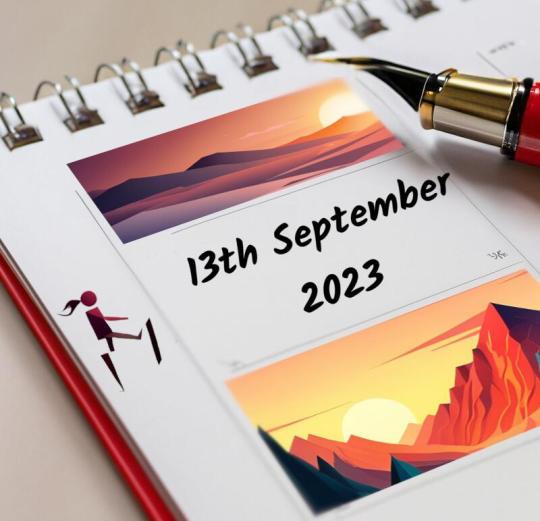
13th September 2022 🗓️ : Death - Jean-Luc Godard Jean-Luc Godard, French-Swiss film director, screenwriter, and film critic (b. 1930) "Jean-Luc Godard (UK: GOD-ar, US: goh-DAR; French: [ʒɑ̃ lyk ɡɔdaʁ]; 3 December 1930 – 13 September 2022) was a Franco-Swiss film director, screenwriter, and film critic. He rose to prominence as a pioneer of the French New Wave film movement of the 1960s, alongside such filmmakers as François..."

Image licensed under CC BY 2.0? by Gary Stevens
13th September 2018 🗓️ : Event - Merrimack Valley gas explosions The Merrimack Valley gas explosions: One person is killed, 25 are injured, and 40 homes are destroyed when excessive natural gas pressure caused fires and explosions. "On September 13, 2018, excessive pressure in natural gas lines owned by Columbia Gas of Massachusetts caused a series of explosions and fires to occur in as many as 40 homes, with over 80 individual fires, in the towns of Lawrence, Andover, and North Andover, all within the Merrimack Valley, in..."
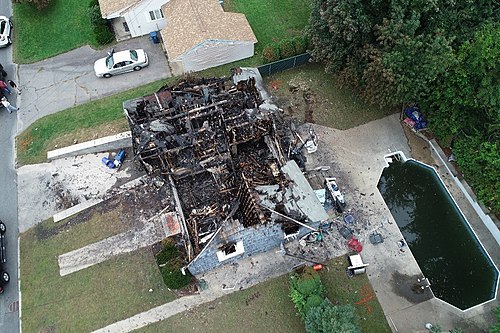
Image by National Transportation Safety Board
13th September 2013 🗓️ : Event - Taliban Taliban insurgents attack the United States consulate in Herat, Afghanistan, with two members of the Afghan National Police reported dead and about 20 civilians injured. "The Taliban (; Pashto: طالبان, romanized: ṭālibān, lit. 'students'), which also refers to itself by its state name, the Islamic Emirate of Afghanistan, is a Deobandi Islamic fundamentalist and Pashtun nationalist militant political movement in Afghanistan. It ruled approximately three-quarters of..."
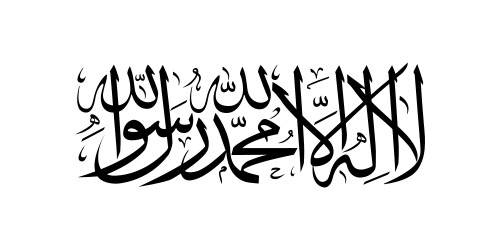
Image by
Original:
Taliban
Vector:
Lexicon
13th September 1973 🗓️ : Death - Sajjad Zaheer Sajjad Zaheer, Indian poet and philosopher (b. 1905) "Syed Sajjad Zaheer (Urdu: سید سجاد ظہیر) (5 November 1905 – 13 September 1973) was an Indian Urdu writer, Marxist ideologue and radical revolutionary who worked in both India and Pakistan. In the pre-independence era, he was a member of the Communist Party of India and the Progressive Writers'..."
13th September 1923 🗓️ : Event - Miguel Primo de Rivera Following a military coup in Spain, Miguel Primo de Rivera takes over, setting up a dictatorship. "Miguel Primo de Rivera y Orbaneja, 2nd Marquis of Estella, GE (8 January 1870 – 16 March 1930), was a Spanish dictator and military officer who ruled as prime minister of Spain from 1923 to 1930 during the last years of the Bourbon Restoration. He was born into a landowning family of Andalusian..."

Image licensed under CC0? by Kaulak
13th September 1819 🗓️ : Birth - Clara Schumann Clara Schumann, German pianist and composer (d. 1896) "Clara Josephine Schumann ([ˈklaːʁa ˈʃuːman]; née Wieck; 13 September 1819 – 20 May 1896) was a German pianist, composer, and piano teacher. Regarded as one of the most distinguished pianists of the Romantic era, she exerted her influence over the course of a 61-year concert career, changing the..."
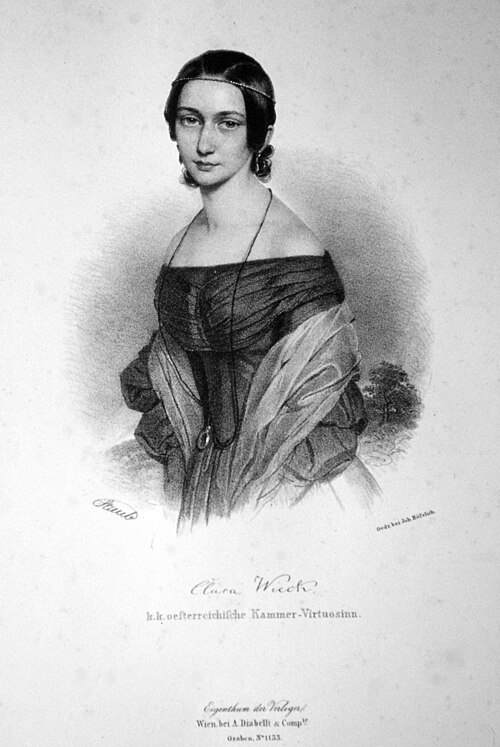
Image by Andreas Staub
13th September 🗓️ : Holiday - Christian feast day: Ame "Saint Amatus, (c.560-c.627)) also called Amatus of Grenoble or Saint Ame or Aimee, was a Colombanian monk and hermit. Together with St. Romaric, he founded Remiremont Abbey. ..."
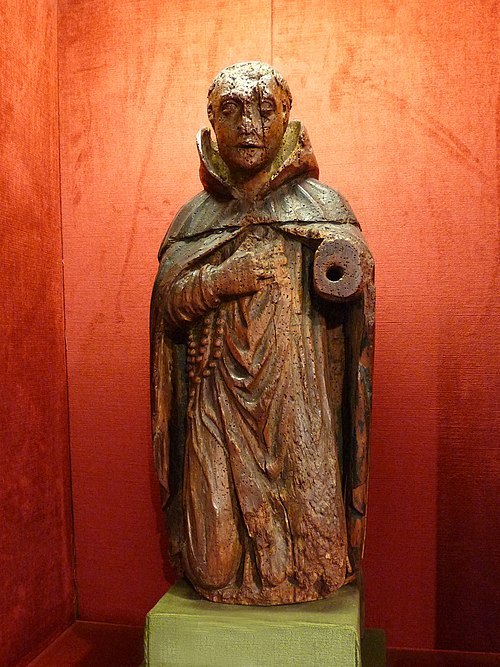
Image licensed under CC BY-SA 3.0? by Ji-Elle
0 notes
Text
افغانستان سے انخلا میں پاکستان کو اہم پارٹنر کے طور پر دیکھتے ہیں، جرمنی
افغانستان سے انخلا میں پاکستان کو اہم پارٹنر کے طور پر دیکھتے ہیں، جرمنی
برلن (آواز نیوز) جرمن وزیر خارجہ انالینا بیئربوک افغانستان میں طالبان حکام پر انسانی حقوق اور خاص طور پر خواتین کے حقوق کو یقینی بنانے کے لیے دباﺅ بڑھانا چاہتی ہیں۔ میڈیارپورٹس کے مطابق جرمن وزارت خارجہ نے ایک بیان میں کہاکہ بیئربوک پاکستان کے دورے پر اسلام آباد حکومت سے بات چیت کے دوران اس بات پر زور دیں گی ۔ جرمن وزارت خارجہ کے مطابق جرمن حکومت افغانستان سے عام شہریوں کے انخلا کے معاملے میں…

View On WordPress
0 notes
Text
WATCH VIDEO: What West Indies legend did in the dressing room that shocked Indian players? | KKG INFO
WATCH VIDEO: What West Indies legend did in the dressing room that shocked Indian players? | KKG INFO
In the first ODI against West Indies, Shikhar Dhawan scored a stunning 97 runs. But he fell short of the century by 3 runs. Shubman Gill scored 64 runs. West Indies Vs India 1st ODI West Indies former star Brian Lara India beat West Indies by 3 runs in the first match of ODI series. Batting first, the Indian team scored 308 runs in this match held on Friday. Batting later, West Indies managed…

View On WordPress
#bbc urdu cricket news#cricket news reporter#cricket news sinhala#cricket score zim vs afghanistan#dressing#Ind Vs Wi#Indian#Indian team#Indies.#INFO#KKG#legend#players#ranchi cricket news#room#Shikhar Dhawan#shocked#top 5 cricket news hindi#uganda cricket news#video#Watch#West#WI Vs Ind
0 notes
Text
पहले ओमाइक्रोन कम्युनिटी स्प्रेड की रिपोर्ट के बाद चीन का मास टेस्टिंग ब्लिट्ज
पहले ओमाइक्रोन कम्युनिटी स्प्रेड की रिपोर्ट के बाद चीन का मास टेस्टिंग ब्लिट्ज
चीन में ओमिक्रॉन: चीन ने शनिवार को 92 नए स्थानीय मामले दर्ज किए। चीन ने समुदाय में अपने पहले ओमाइक्रोन मामलों को देखा, उत्तरी शहर तियानजिन में एक बड़े पैमाने पर परीक्षण ब्लिट्ज को प्रज्वलित किया, क्योंकि देश अधिक पारगम्य वेरिएंट के सामने कोविड के लिए अपने शून्य-सहिष्णुता के दृष्टिकोण को बनाए रखने का प्रयास करता है। सीसीटीवी ने बताया कि बंदरगाह शहर में दो मामलों की पुष्टि चीनी रोग नियंत्रण और…
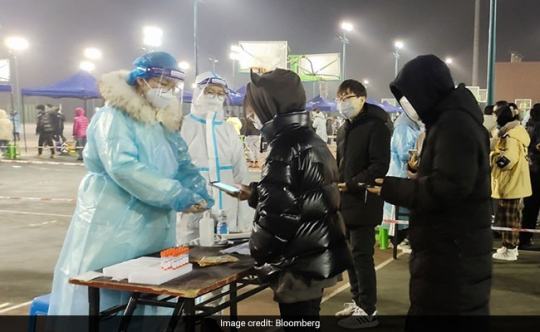
View On WordPress
#world news afghanistan#world news crime#world news headlines today#world news in english#world news live#world news ndtv#world news urdu#world news video today#world news yemen#world news youtube today#ओमइकरन#क#कमयनट#चन#चीन ओमाइक्रोन मामले#चीन कोरोनावायरस के मामले#चीन में कोरोनावायरस#चीन में कोविड#टसटग#पहल#बद#बलटज#मस#रपरट#सपरड
0 notes
Video
#pakistan #world #news #truth #urdu #kashmir #palestine #afghanistan https://www.instagram.com/p/CTHP8ZyIfyE/?utm_medium=tumblr
0 notes
Photo

الحلال اور UNICEF نے افغانستان میں صحت کا ایک پروگرام شروع کیا ہے
#uae#dubai#abudhabi#emirates#covid#arab#arabic#news#urdu#UNICEF#Al Halal#Halal#healthprogram#health#afghan#afghanistan
0 notes
Photo

2 Presidents in Afghanistan اشرف غنی اور عبداللہ عبداللہ دونوں صدر بن گئے #2PresidentsInAfghanistan, #Corona, #Google, #QaumiAkhbar, #Ticker, #UrduNewsInternational, #اردو, #اردونیوز, #پاکستان, #قومیاخبار
#2 Presidents in Afghanistan#Corona#google#qaumi akhbar#ticker#urdu news international#اردو#اردو نیوز#پاکستان#قومی اخبار#دنیا نامہ#متفرق
0 notes
Text
In Afghanistan the Lion of the Panjshir did more than Sun Myung Moon ever did to bring down the Soviet Union

In the past the Unification Church has claimed that Moon could take much credit for the fall of the Soviet Union. Not so.
Since his death in 2001, Ahmad Shah Massoud has become a national hero in Afghanistan. A fierce fighter, yet a moderate and thoughtful man, he was the only leader who never fled the country through all its ups and downs. He was awarded the title "Hero of the Afghan Nation" by President Hamid Karzai immediately after his death; today, many Afghans consider him to have almost saintly status.
In the west, too, Massoud is held in high esteem. Although he is not as widely remembered as he should be, those in the know consider him to be the single person most responsible for bringing down the Soviet Union and ending the Cold War – more so than Ronald Reagan or Mikhail Gorbachev. Today, the Panjshir region that Ahmad Shah Massoud controlled is one of the most peaceful, tolerant and stable areas in war-ravaged Afghanistan.
When Ahmad Shah Massoud was in the third grade, his father became the chief of police in Herat, northwest Afghanistan. The boy was a talented student, both in elementary school and in his religious studies. He eventually took to a moderate type of Sunni Islam, with strong Sufi overtones.
Ahmad Shah Massoud attended high school in Kabul after his father transferred to the police force there. A gifted linguist, the young man became fluent in Persian, French, Pashtu, Hindi and Urdu, and was conversant in English and Arabic.
As an engineering student at Kabul University, Massoud joined the Organization of Muslim Youth (Sazman-i Jawanan-i Musulman), which opposed the communist regime of Afghanistan and growing Soviet influence in the country. ...
On December 27, 1979, the Soviet Union invaded Afghanistan. Ahmad Shah Massoud, The Lion of the Panjshir, immediately devised a strategy for guerrilla warfare against the Soviets (since a frontal attack on the Afghan communists earlier in the year had failed). Massoud's guerrillas blocked the Soviets' vital supply route at Salang Pass, and held it all through the 1980s.
Every year from 1980 to 1985, the Soviets would throw two massive offensives against Massoud's position, each attack larger than the last. Yet Massoud's 1,000-5,000 mujahadeen held out against 30,000 Soviet troops armed with tanks, field artillery and air support, repulsing each attack.
This heroic resistance earned Ahmad Shah Massoud the nickname "Lion of the Panshir" (in Persian, Shir-e-Panshir, literally "Lion of the Five Lions").
In August of 1986, Massoud began his drive to liberate northern Afghanistan from the Soviets. His forces captured the city of Farkhor, including a military airbase, in Soviet Tajikistan. Massoud's troops also defeated the Afghan national army's 20th division at Nahrin in north-central Afghanistan in November of 1986.
Ahmad Shah Massoud studied the military tactics of Che Guevara and Mao Zedong.
His guerrillas became consummate practitioners of hit-and-run strikes against a superior force and captured significant amounts of Soviet artillery and tanks.
On the 15th of February, 1989, the Soviet Union withdrew its last soldier from Afghanistan. This bloody and expensive war would contribute significantly to the collapse of the Soviet Union itself over the following two years – thanks in no small part to Ahmad Shah Massoud's mujahideen faction.
Outside observers expected the communist regime in Kabul to fall as soon as its Soviet sponsors withdrew, but in fact it held on for three more years. With the final fall of the Soviet Union in early 1992, however, the communists lost power. A new coalition of northern military commanders, the Northern Alliance, forced President Najibullah from power on April 17, 1992. ...
In April 1992, resistance leaders in Peshawar tried to negotiate a settlement. Massoud supported the Peshawar process of establishing a broad coalition government inclusive of all resistance parties, but Hekmatyar sought to become the sole ruler of Afghanistan, stating, “In our country coalition government is impossible because, this way or another, it is going to be weak and incapable of stabilizing the situation in Afghanistan.”
Massoud wrote: “All the parties had participated in the war, in jihad in Afghanistan, so they had to have their share in the [new] government, and in the formation of the government. Afghanistan is made up of different nationalities. We were worried about a national conflict between different tribes and different nationalities. In order to give everybody their own rights and also to avoid bloodshed in Kabul, we left the word to the parties so they should decide about the country as a whole. We talked about it for a temporary stage and then after that the ground should be prepared for a general election.”... LINK
in 2001 Massoud and his Northern Alliance, which controlled parts of the Afghan northeast, led the only remaining resistance to the Taliban, who earned international notoriety by hosting Al-Qaeda leader Osama bin Laden.
Al-Qaeda intended to kill Massoud three weeks earlier, sending two bombers disguised as reporters to request an interview with him, but he made them wait for 22 days before granting the pair a 5-minute interview that proved deadly.
The extremist coalition of al-Qaeda and the Taliban wanted to remove Massoud and undermine the Northern Alliance before making their strike against the United States on September 11.
Had he been killed earlier as planned, experts predict the Northern Alliance would have fallen and put the US-led invasion of October 2001 in jeopardy without its crucial Afghan partners.
"The goal was to eliminate all types of resistance before the September 11 attacks," said Afghan analyst Haroon Mir.
Read the full story here: https://www.thoughtco.com/ahmad-shah-massoud-195106
Sources:
AFP, "Afghan Hero Massoud's Assassination a Prelude to 9/11"
Clark, Kate. "Profile: The Lion of Panjshir," BBC News online.
Grad, Marcela. Massoud: An Intimate Portrait of the Legendary Afghan Leader, St. Louis: Webster University Press, 2009.
Junger, Sebastian. "Sebastian Junger on Afghanistan's Slain Rebel Leader," National Geographic Adventure Magazine.
Miller, Frederic P. et al. Ahmad Shah Massoud, Saarbrucken, Germany: VDM Publishing House, 2009.
https://en.wikipedia.org/wiki/Ahmad_Shah_Massoud
7 notes
·
View notes
Text
Afghanistan’s ‘Misinformation Surge’

An avalanche of misinformation has followed the Taliban takeover of Afghanistan. Some of it is sloppiness: people sharing information and not knowing it’s wrong. But intentional efforts appear to be at play, seeking to shape the images of the Taliban, the resistance, U.S. officials, and the Pakistani military. The identities and motivations of those sharing this misinformation are often not clear, but they could be part of organized propaganda campaigns.
Misinformation about Afghanistan has been posted in many languages, including Urdu, Hindi, English, and Korean. The Poynter Institute, the Associated Press, and Agence France-Presse have compiled many examples, including a Twitter thread from AFP fact-checker Uzair Rizvi.
U.S. actions in Afghanistan have so far been a frequent target of misinformation. Some social media posts include photoshopped images of Afghan evacuees bearing heavy weaponry, suggesting Washington has helped terrorists leave Afghanistan; these were posted by Russian media outlets. Others falsely accuse U.S. President Joe Biden of gifting $80 billion in arms to the Taliban and abandoning U.S. military dogs.
Additionally, much of the misinformation spreading in Afghanistan relates to Taliban brutalities and is easily debunked. An image of the Taliban purportedly auctioning off women actually depicts a protest against the Islamic State in London in 2016, and a photo of a man leading women in chains is digitally edited from an image taken in Iraq in 2003, for example. Other posts mention a nonexistent Al Jazeera investigation on women abducted by the Taliban and their nonexistent plans to execute Christian missionaries.
The battles between the Taliban and resistance fighters in Panjshir—the only province not seized by the group last month—have become a bonanza for fake news. The lack of credible on-the-ground reporting in the province has led to an information shortage that could be easily exploited. Photos of supposed Taliban fighters in Panjshir actually depicted French soldiers. Several Indian TV channels broadcast video purporting to show Pakistani aircraft attacking Panjshir. (In reality, the video was depicting American jets flying in Wales.)
What explains this surge in misinformation? The sudden attention rush of a major news story, the power of social media, and information shortages all play a role. Moreover, actors with axes to grind use misinformation as ammunition. Fake news about Biden’s policies in Afghanistan has been propagated by his rivals, from the U.S. Republican Party to Russian state media. Nationalist Indian outlets seek to paint Pakistan as an aggressor.
The information vacuum is critical. In recent years, Afghan and U.S. officials stopped providing information about military casualties and the amount of territory under Taliban control. As the security situation worsened in the last few years, media coverage outside of Kabul became more difficult. It’s now hard to know what’s happening in far-flung areas. In Panjshir, for example, the lack of on-the-ground reporting results in competing narratives, fueling rumors and propaganda wars.
The spread of misinformation in Afghanistan has troubling implications. For one, fake stories about the Taliban could change the group’s image among those outside of Afghanistan. While its brutality is apparent from its actions in Kabul, where citizen journalists recently filmed the Taliban beating female protesters, it’s harder to see this elsewhere. Without independent reporting, accounts of beatings, arrests, and intimidation outside the capital can’t be confirmed—giving the group space to project itself as softer and more moderate.
Furthermore, with so much fake news, true accounts run the risk of being dismissed as false. Social media posts have already suggested the images of U.S. aircraft taking off with Afghans clinging on that began circulating on Aug. 16 are fake. And with foreign bureaus evacuating their Afghan employees and local journalists facing Taliban threats, information shortages are only likely to worsen.
Unfortunately, the spread of misinformation all works to the Taliban’s advantage. It could prompt the militants to ramp up repressive activities in areas with little media presence, knowing that many of them will go unreported or unconfirmed.
Misinformation About the End of the War in Afghanistan, Debunked
These claims were among the recurring themes of misinformation that we fact-checked as the two-decade war came to a chaotic close.
— By: Samantha Putterman
— September 7, 2021 | Poynter.Org

President Joe Biden speaks about the end of the war in Afghanistan from the State Dining Room of the White House, Tuesday, Aug. 31, 2021, in Washington. (AP Photo/Evan Vucci)
As President Joe Biden stuck to a deadline for pulling U.S. forces out of Afghanistan, he was criticized for leaving some Americans and thousands of Afghan allies behind and for not responding fast enough to the Taliban’s takeover.
Biden was also lashed over several things he didn’t do or that just didn’t happen.
Influential GOP senators and Fox News promoted false and misleading claims about the scale of U.S. weaponry now in the Taliban’s hands, the abandonment of military K-9s, and Biden’s treatment of the families of 13 U.S. soldiers who died in the Aug. 26 Kabul airport attack, which killed more than 200 people.
These claims were among the recurring themes of misinformation that we fact-checked as the two-decade war came to a chaotic close.
Claim: The Biden administration gifted the Taliban with an $80 billion “arsenal.”
Claims about the U.S. giving Taliban weapons surfaced following reports about Taliban fighters seizing some U.S. attack planes, Black Hawk helicopters and other vehicles and equipment. But trending posts about the Taliban’s new “arsenal” relied on outdated spending and purported to cite precise accounting where there is none yet.
Early on, widely shared Facebook posts inaccurately stated that the Biden administration gifted the Taliban with “$80+ billion” in military weapons.
That estimate is False. The U.S. spent about $88.6 billion on security in Afghanistan over the course of two decades, but just a fraction of it went toward military hardware. Defense expert John Pike, director of GlobalSecurity.org, told us that aircraft and other military equipment remaining are likely worth less than $10 billion.
Another misleading post about weapons in the Taliban’s hands listed 19 categories of military equipment, including 358,530 assault rifles, 22,174 Humvees and 33 UH-60 Black Hawk helicopters.
This is also exaggerated. There has been no accounting of how much military equipment was left in Afghanistan. The figures cited are inflated and outdated, with most of the equipment being provided over many years to the Afghan forces.
The “358,530 assault rifles” figure, for example, appears to be from a 2017 report from the U.S. Government Accountability Office that counted the number of rifles, including AK-47s and sniper rifles, provided from 2004 to 2016.
And none of the figures show how many items remained in Afghanistan and were usable when the Taliban took control in mid-August.
Overall, most of the weaponry and equipment were provided over many years to the Afghan forces that opposed the Taliban, while some remained in control of the U.S. military.
Claim: Biden didn’t attend the ceremony for the 13 U.S. service members killed in Kabul.
We rated this Pants on Fire.
The baseless allegation was made by various conservatives — notably Republican political adviser Blair Brandt, and Buzz Patterson, a GOP candidate for Congress in California. They said in now-deleted tweets that Biden skipped the dignified transfer ceremony at Dover Air Force Base for the remains of the 13 U.S. military service members who died in the Aug. 26 attack.
But the plane carrying the remains of the service members hadn’t yet arrived at the base when the tweets were posted. The ceremony took place the next day, on Aug. 29. Biden attended. He and first lady Jill Biden met with the families of the service members at Dover’s Center for Families of the Fallen.
Claim: The U.S. military left its working dogs in Afghanistan.
A viral photo of dog crates in front of a battered and empty U.S. helicopter sparked outrage among fans of dogs and the military. Prominent Republicans like Sen. Rick Scott, R-Fla., said that they were military dogs abandoned at the Kabul airport during the U.S. evacuation.
But that isn’t right. The federal government said the dogs pictured do not work for the military and that its working dogs were evacuated from the country in mid-August.
“The U.S. military did not leave any dogs in cages at Hamid Karzai International Airport, including the reported military working dogs,” Pentagon spokesman John Kirby tweeted on Aug. 31. “Photos circulating online were animals under the care of the Kabul Small Animal Rescue, not dogs under our care.”
Some of the animals in the images likely belonged to independent defense contractors and could be characterized as “contract working dogs.”
Some animal welfare groups like American Humane dismissed any distinction between the dogs’ contract or military status and called on Congress to start classifying contract dogs the same way it does military dogs.
Multiple groups involved in evacuating the dogs cited a series of setbacks, including chartered flights falling through, unrest at the airport and stringent U.S. safety regulations. Advocates said the dogs are safe, but what happens to them now is uncertain.
Claim: Video shows the Taliban executed someone by hanging them from a helicopter.
Conservative bloggers, pundits and politicians like Texas Sen. Ted Cruz shared a short, blurry video of a helicopter flying with a person dangling from a rope.
“This horrifying image encapsulates Joe Biden’s Afghanistan catastrophe: The Taliban hanging a man from an American Blackhawk helicopter,” Cruz tweeted.
That explanation is False. Various other images and videos reviewed by PolitiFact show that the person dangling from the chopper was alive, moving and waving his arms. The person was suspended by a harness that wrapped under his arms, not a noose around the neck.
Several news outlets and fact-checkers reached the same conclusion, determining that the video did not depict an execution, and that the person had been tasked with trying to fix a flag on a public building.
Aśvaka News Agency, an Afghan news outlet, later confirmed to PolitiFact that the person was controlled and was hanging from the helicopter to fix the flag at the governor’s building in Kandahar, Afghanistan’s second-largest city.
Cruz later acknowledged that his tweet “may be inaccurate” and deleted it. But others, like Fox News host Sean Hannity, continued to give the false story air after it was widely debunked.
NOT REAL NEWS: A Look at What Didn’t Happen this Week
— By The Associated Press | August 20, 2021
— Tom Kertscher, Gabrielle Settles and Bill McCarthy contributed reporting.

This February 2003 photo provided by photographer Murat Düzyol shows three women walking behind a man in Erbil, Iraq. A version of this original image was manipulated to digitally add chains on the women's ankles, with a caption erroneously claiming it was made in Afghanistan after the Taliban took control of the country in August 2021. (Murat Düzyol via AP)
A roundup of some of the most popular but completely untrue stories and visuals of the week. None of these are legit, even though they were shared widely on social media. The Associated Press checked them out. Here are the facts:
Photo from Iraq altered to create fake image of chained Afghan women
CLAIM: A photo shows three Afghan women chained to one another, walking behind a man who holds the end of the chain.
THE FACTS: The photo is fake. It was based on an old photo, and the chains were digitally added. Photographer Murat Düzyol told The Associated Press he took the original photo in Erbil, Iraq, in February 2003. Tweets sharing the altered photo were among several misleading social media posts that began to emerge after the Taliban seized power in Afghanistan on Sunday. Twitter users posted the manipulated photo and suggested that it showed women in Afghanistan walking behind a man. In the edited photo, chains were digitally added onto the ankles of the women, with the man holding the chain. There was no chain in the original photo. Also, it was taken in Iraq, not Afghanistan. “#AfghanWomen. God protect women and children because an institution like the United Nations has become impotent,” said a Twitter user who tweeted the altered photo. Over the years, the photo has been misrepresented and posted multiple times. One blog falsely stated the photo was taken in Afghanistan and said it showed an example of women walking about five paces behind their husbands. Düzyol, who lives in Istanbul, told AP he took the photo in 2003. Around that time, he often visited Iraq and took photos. The day the photo was taken, there was a ceremony commemorating Iraqi civilians who were killed in the city of Erbil, he said. “As people were returning to their homes after the ceremony, such a composition randomly appeared on the street. It’s a completely instant snapshot and completely natural,” Düzyol explained in an email. “The women obviously knew each other, but I’m not sure they knew the man.” Many fear the Taliban will reimpose a strict interpretation of Islamic law that was practiced when they ran Afghanistan from 1996 to 2001. At the time, women were barred from attending school and having jobs outside the home. They had to wear burqas and be accompanied by a male relative when they were in public. After taking over, the Taliban said they promise to honor women’s rights within the norms of Islamic law, but many Afghans are skeptical. — Associated Press writer Arijeta Lajka in New York contributed this report.

Afghan citizens pack inside a U.S. Air Force C-17 Globemaster III, as they are transported from Hamid Karzai International Airport in Afghanistan, Sunday, Aug. 15, 2021. On Friday, Aug. 20, 2021, The Associated Press reported on stories circulating online incorrectly claiming another photo showed a plane full of Afghan refugees being evacuated from the country this week, with not a single woman or child among them. In fact, that photo, which appeared online as early as 2018, shows Afghan refugees being sent back to their country from Turkey, according to a story at the time from Turkey’s state-run news agency, the Anadolu Agency. Photos captured this week show that hundreds of Afghan men, women and children have been evacuated from Afghanistan since the Taliban takeover. (Capt. Chris Herbert/U.S. Air Force via AP)
Photo of Afghan men on plane is from 2018
CLAIM: A photo shows a plane full of Afghan refugees being evacuated from the country this week, with not a single woman or child among them.
THE FACTS: In fact, this photo appeared online as early as 2018. It shows Afghan refugees being sent back to their country from Turkey, according to a story at the time from Turkey’s state-run news agency, the Anadolu Agency. The photo looks down the aisle of an airplane filled with men, some of them waving at the camera. Social media users are sharing it as new this week with claims it shows only men, with no women and children, being evacuated from Kabul after the Taliban seized power in Afghanistan. “And not a single woman or child among them!” one Facebook user wrote alongside the picture. “As if the invasion of our southern border weren’t enough of a challenge. Now the biden Administration is flying in hardened, fighting-aged men from Afghanistan.” Another Facebook user wrote, “Another wave of ‘refugees’ is already heading to Europe, this time from Afghanistan.” But a reverse-image search reveals the picture does not show recent evacuation efforts from Afghanistan. The photo showed some 324 Afghan refugees who had entered Turkish territory illegally and were detained and sent back to Afghanistan in April 2018, according to an article on the Spanish-language version of the Anadolu Agency’s website. Photos captured this week show that hundreds of Afghan men, women and children have been evacuated from Afghanistan since the Taliban takeover. — Associated Press writer Ali Swenson in New York contributed this report.

FILE - The Afghan flag flies atop the presidential palace in Kabul, Afghanistan, Tuesday, Aug. 17, 2021. On Friday, Aug. 20, 2021, The Associated Press reported on a photo circulating online that was digitally altered to make it appear that the Taliban flag was flying on the tower of the palace in Kabul on Sunday, Aug. 15, 2021. (AP Photo/Rahmat Gul, File)
Photo digitally altered to show Taliban flag on Afghan presidential palace
CLAIM: A photo shows the Taliban flag flying on the tower of the Afghanistan presidential palace in Kabul on Sunday night.
THE FACTS: The photo is fake — an old photo was digitally altered to make it appear that the Taliban flag was flying above the palace. On Sunday, Taliban forces seized the presidential palace. The Associated Press took photos and video Tuesday showing that the Afghan flag was still flying from the building. The photo that was manipulated was first shared in 2020 and originally showed the palace adorned with Afghan flags. In the manipulated version, the Taliban flag replaces the Afghan flag. It looks clearly altered -- the flag appears too rectilinear and the script too flat to be on a moving flag. The edited photo was shared across social media and by some media outlets, with captions saying it showed the fall of Afghanistan. The Taliban took over Afghanistan two weeks before the U.S. was supposed to fully withdraw its troops from the country. President Ashraf Ghani has fled the country. AP photos showed the Taliban inside the presidential palace on Sunday.
Video claiming to show Taliban fighters on trampoline is more than a year old
CLAIM: A video shows Taliban fighters jumping on a trampoline this week as they celebrate their return to power in Afghanistan.
THE FACTS: This video is not current and has circulated online for more than a year. In the days since the Taliban seized power across Afghanistan, capturing all major cities in less than a week, social media users have shared videos of the insurgents allegedly celebrating their victory in gyms, amusement parks and presidential suites. One such video, which social media users claim shows Taliban fighters rejoicing on a trampoline, has circulated since at least March 2020. The video of four men jumping on an expansive trampoline and one standing to the side was shared with captions like “Taliban’s terrorists right now” and “Taliban fighters celebrating their takeover of Kabul by Jumping on a Trampoline.” But it appeared on Facebook as early as March 31, 2020. It was also shared on YouTube on Aug. 28, 2020, with the caption, “Taliban first time trampoline.” It wasn’t clear who captured the original video or who was featured in it. — Ali Swenson
Video showing shaking house is from Alaska, not Haiti
CLAIM: Video from a camera inside a home shows the house shaking from a 7.2-magnitude earthquake that struck Haiti on Saturday.
THE FACTS: The video being shared online shows an earthquake that struck nearly three years ago in Alaska, not Haiti. As images and videos emerged from Haiti following Saturday’s earthquake, social media users began misrepresenting the Alaska video from 2018 to suggest it showed the earthquake rumbling through a home in Haiti. More than 2,000 people have been reported dead in Haiti following the earthquake that struck the southwestern part of the Island. In 2010, an earthquake of similar magnitude left more than 300,000 dead in the country. Posts online Saturday shared the video showing the Alaska earthquake, with wording that suggested it showed the power of the earthquake in Haiti. The posts sharing the video said to pray for Haiti. The original video was shared to Twitter by James Easton on Nov. 30, 2018, when Alaska was hit with a 7.0-magnitude earthquake. At the time, The Associated Press reported that the earthquake left thousands without power and buckled roadways in some places. Easton told the AP via email that the video showed his home in Alaska. Easton tweeted the video, saying that he was “just a little bit shaken” by the earthquake. The video showed the house violently shaking and the camera footage soon being cut off by the quake. “It’s amusing to see the video pop up every so often, but the focus should really be on the actual damage in Haiti,” he said. — Associated Press writer Beatrice Dupuy in New York contributed this report.




3 notes
·
View notes
Text
Muqabil with Haroon ur Rasheed | 15 August 2021
Muqabil with Haroon ur Rasheed | 15 August 2021 #Afghanistan #AshrafGhani #Muqabil #MuqabilwithHaroonUrRasheed
Today’s Pakistani talk show/program ” Muqabil with Haroon ur Rasheed | 15 August 2021 “ was live streamed telecast on ” 92 News HD “ YouTube/daily motion channel. Watch full hd episode. The topic is ” Ashraf Ghani Leaves Afghanistan “ https://m.youtube.com/watch?v=Pk2c8Yg_o8M All Pakistani news, news headlines, current affairs, Pakistan talk shows, and world news are available in Urdu and…
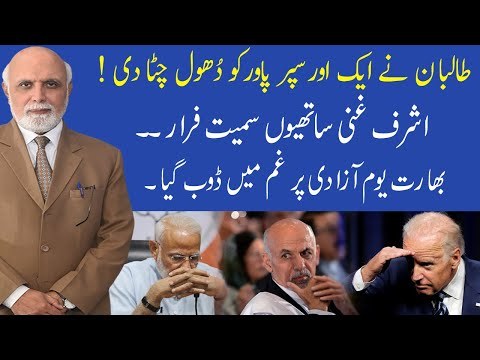
View On WordPress
1 note
·
View note